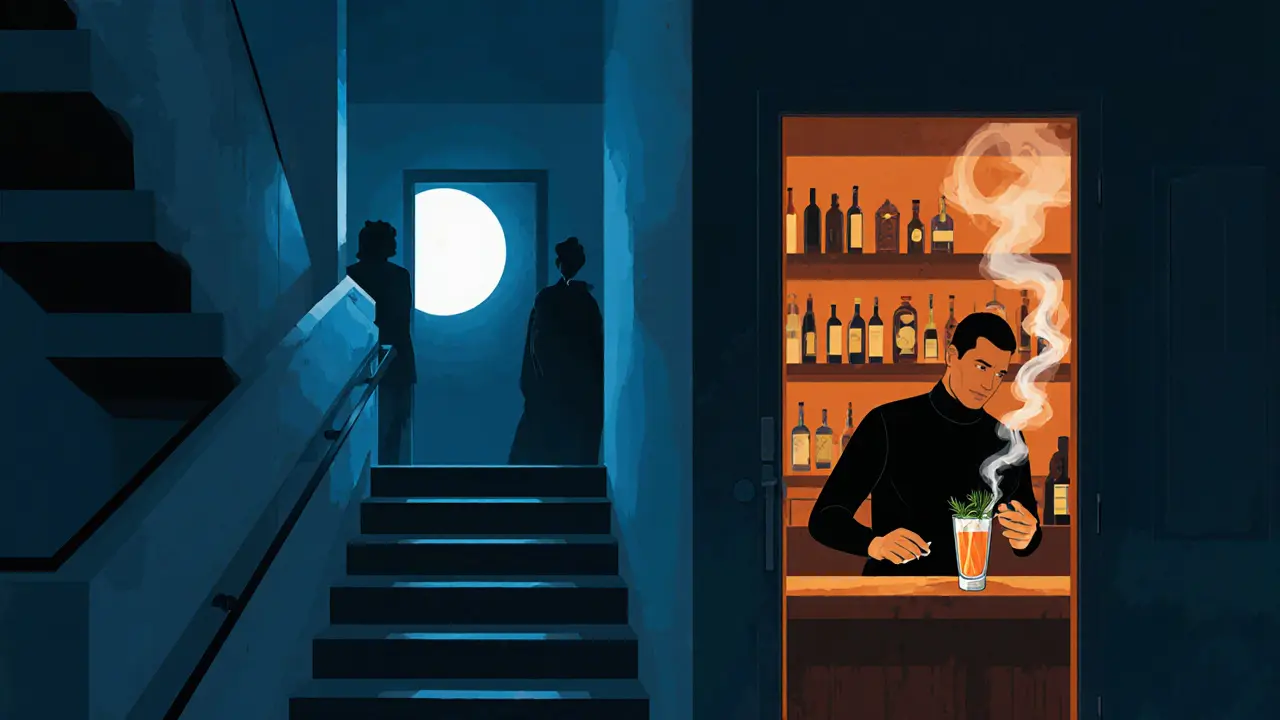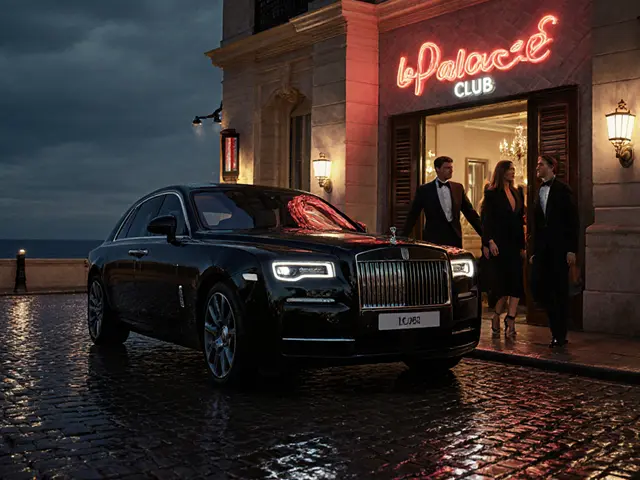Most tourists leave Milan by 9 p.m., thinking the city shuts down after dinner. They’re wrong. By 11 p.m., the real Milan wakes up. You won’t find it on Instagram ads or travel blogs. It’s tucked into alleyways behind unmarked doors, in converted warehouses near the Navigli canals, and in quiet courtyards where the only sign is a single candle glowing on a windowsill.
Start with Navigli: Where the Locals Drink
The Navigli district isn’t new, but it’s still the heartbeat of Milan’s night. Forget the crowded bars near Porta Genova. Head south, past the bridge where the streetlights turn gold and the water reflects the neon from floating barges. Here, Bar Basso still serves the original Negroni Sbagliato-made with Prosecco instead of gin-since 1982. Locals know it by the line out the door, not the sign. Order it at the counter, not the table. You’ll get it faster, and you’ll be standing next to someone who’s been coming here for 20 years.
Walk 10 minutes down the canal to Caffè del Doge. It’s not a café at night. It’s a jazz bar with no menu, no prices posted, and a piano that plays itself when someone drops a euro in the jar. The owner, Marco, doesn’t speak English. He doesn’t need to. He nods when you point at the bottle on the shelf. You’ll leave with a bottle of Amarone and a story you won’t tell your friends.
Hidden Bars: The Door That Doesn’t Look Like a Door
Milan’s best bars don’t advertise. They don’t need to. The password is in the architecture. Look for the narrow staircase behind the butcher shop on Via Tortona. Climb it. At the top, there’s a door with no handle. Knock three times. If you hear a single chime, you’re in. This is Clandestino. No lights. No names on the cocktails. Just a bartender in a black turtleneck who mixes drinks by scent and mood. One night, you might get a gin with rosemary smoke. The next, a bourbon with burnt orange peel and a single ice cube that never melts.
Down the street, behind a bookshop with no sign, is The Library. It’s not a bar. It’s a reading room that turns into a cocktail lounge after midnight. The shelves are real books-first editions, Italian poetry, old film scripts. You pick a book. The bartender pulls a drink from the shelf next to it. A book by Moravia? You get a bitter liqueur with a twist of lemon. A volume of Pasolini? A dark rum with a drop of black walnut tincture. The drinks change with the season. The books never do.

Clubs That Don’t Look Like Clubs
If you’re looking for a club with a bouncer, a velvet rope, and a DJ spinning house music, you’re in the wrong city. Milan’s clubs are spaces first, parties second. Take La Scala-no, not the opera house. This one’s a 1950s cinema turned underground venue in the Porta Venezia district. The walls are still painted with faded movie posters. The floor is sticky with spilled beer and sweat. The music? It changes every night. One night, it’s experimental techno from Berlin. The next, it’s Milanese folk songs played on accordion and banjo. No one checks your ID. No one asks your name. You just walk in, find a corner, and stay until the sun comes up.
Then there’s Officine Grandi Riparazioni-a former train repair shop in the Lambrate district. It’s not a club. It’s a warehouse with steel beams, concrete floors, and a sound system that vibrates your ribs. The DJs here don’t play hits. They play forgotten tracks from the 80s, field recordings from Sicilian festivals, and ambient noise from Milan’s subway tunnels. The crowd? Artists, architects, students, and a few old men who still wear leather jackets from 1987. No one takes photos. No one posts. It’s the only place in Milan where silence is louder than the music.
When to Go, What to Wear, and How to Get In
Don’t show up before 11 p.m. Milan doesn’t rush. Dinner ends at 10. The streets clear out. Then, slowly, people start moving. By midnight, the real night begins. If you’re there at 9, you’ll be the only one. And you’ll feel it.
What to wear? No suits. No sneakers. No logos. Think Italian minimalism: dark jeans, a linen shirt, a wool coat if it’s cold. No one cares about your brand. They care about your energy. If you look like you’re trying too hard, you won’t get past the first door.
Getting in? It’s not about who you know. It’s about how you ask. At Clandestino, say: “I heard the jazz starts at 1.” That’s the password. At The Library, ask for the book on the top shelf. At Officine, just walk in. No one stops you. No one asks. You’re either part of the rhythm-or you’re not.

The Rules No One Tells You
Rule one: Don’t ask for a menu. If you do, you’ll be handed a napkin with a number written on it. Call that number the next day. Someone will answer. They’ll tell you where to go next week.
Rule two: Don’t take photos. Not even with your eyes. If you do, you’ll be asked to leave. Not because it’s forbidden. Because it ruins the magic. These places aren’t for sharing. They’re for living.
Rule three: Leave before 4 a.m. The city doesn’t close. But your body does. The bars stay open. The music keeps playing. But if you’re still standing at 4, you’re not part of the night anymore. You’re just tired.
What Comes After
When the last bar closes, the real night doesn’t end. It just moves. There’s a tiny espresso bar on Via Solferino that opens at 5 a.m. No sign. Just a red awning. The barista knows your name by the third visit. He doesn’t ask why you’re there. He just pours you a double shot and slides a chocolate biscotti across the counter. You sit there until the sky turns gray. And then you realize-you didn’t find Milan’s nightlife.
You became part of it.
What’s the best time to visit Milan for nightlife?
The best time is between late spring and early fall-May through September. The weather is mild, the canals are alive, and outdoor seating fills up quickly. But the real nightlife thrives year-round. Winter brings cozier, quieter bars with fireplaces and mulled wine. If you want the full experience, go in June or July when locals return from holidays and the city feels truly alive.
Are Milan’s nightlife spots safe?
Yes, but only if you follow the local rhythm. Stick to the neighborhoods mentioned here-Navigli, Porta Venezia, Lambrate. Avoid tourist-heavy areas like Corso Buenos Aires after midnight. Most bars and clubs have no security staff because they don’t need it. The crowd self-polices. If you’re respectful, quiet, and don’t draw attention, you’ll be fine. Don’t flash cash. Don’t get loud. And never argue with the bartender.
Do I need to speak Italian to enjoy Milan’s nightlife?
Not fluently, but you need to know a few words: “Grazie,” “Un bicchiere, per favore,” and “Dove si va dopo?” (Where do we go next?). Many bartenders understand English, but they prefer you try. A simple “Buonasera” when you walk in goes further than a long English sentence. Silence works too. A nod, a smile, and a gesture at the bottle on the shelf are enough.
How much should I expect to spend?
A cocktail at Bar Basso costs €14. At Clandestino, it’s €18-no price list, no receipt. A beer at Officine Grandi Riparazioni is €6. Most places don’t take cards. Bring cash-euros, small bills. No cover charges. No minimum spends. You pay for what you drink. And if you stay late, the bartender might bring you a free espresso at dawn. That’s the rule.
Is there a dress code for Milan’s nightlife?
There’s no official dress code, but there’s an unspoken one. Think “quiet luxury.” Dark, well-fitted clothes. No logos, no bright colors, no sneakers. A wool coat, linen shirt, leather shoes. If you’re dressed like you’re going to a club in Ibiza, you won’t fit in. Milan doesn’t care about labels. It cares about presence. If you look like you belong, you will.



